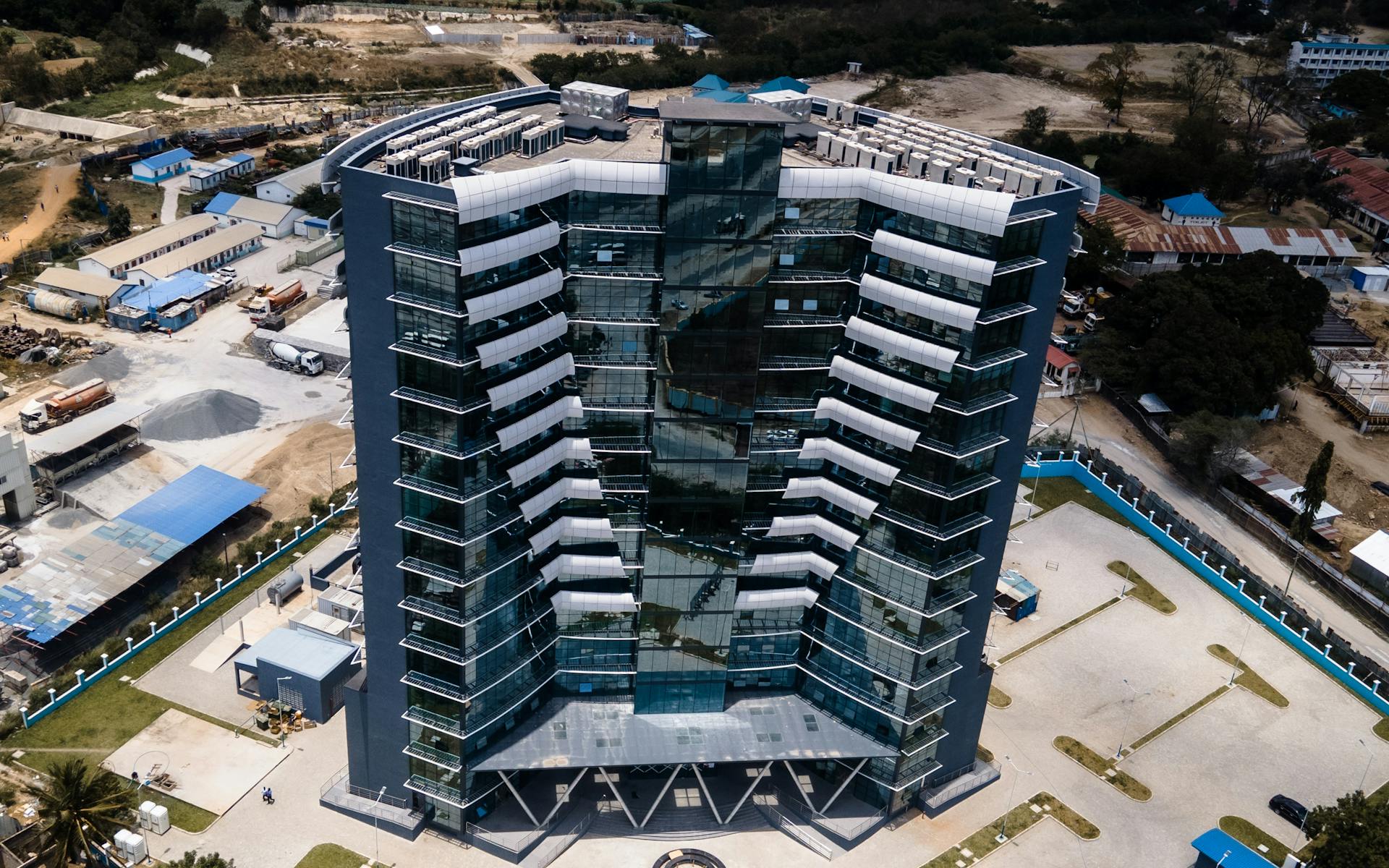

Question: What are Flex Use Properties?
Answer: Flex use properties are versatile spaces, blending office, warehouse, or retail functions. They typically feature adaptable layouts, high ceilings, and loading docks, suitable for diverse business needs and easily reconfigured.
Understanding Flex Use Properties
Flex use properties represent a unique and increasingly vital category in commercial real estate. These properties offer remarkable adaptability, combining the characteristics of industrial, office, and retail spaces. Understanding the nuances of flex properties is crucial for business owners seeking efficient and scalable operations, as well as for investors looking for resilient and high-potential assets in a dynamic market.
Defining Flex Use Spaces and Their Key Characteristics
Flex use properties are fundamentally designed to blend different functionalities seamlessly within a single structure. They commonly feature a strategic combination of open warehouse or light industrial space, dedicated office areas, and often, prominent retail frontage. This multifaceted design allows businesses to dynamically adapt the space to their evolving needs, making them suitable for a wide array of industries and operational models.
A core characteristic of flex properties is their adaptability and customization. Tenants have the unique ability to modify the interior layout and functionality of the space. This flexibility is paramount, enabling businesses to reconfigure for changes in production, administrative needs, or sales strategies without the costly and disruptive process of relocating.
Their inherent design also lends itself to versatility across business types. From light manufacturing and distribution centers to creative agencies, medical offices, and direct-to-consumer showrooms, flex spaces offer tailored solutions for diverse operational requirements. Physically, these properties typically boast high ceilings, often 18-24 feet or more, which are ideal for warehousing, vertical storage, or specialized equipment. They usually include grade-level or dock-high loading doors for efficient shipping and receiving, ample parking, and often, a mix of finished office space and raw industrial area.
Click here to learn more about commercial real estate agents
Please visit this page to see commercial real estate for sale
Related Article: Are Commercial Mortgages the Same as Residential?
Benefits of Investing in Flex Use Properties
Investing in flex use properties offers a compelling set of advantages that appeal to both savvy investors and forward-thinking business owners. These benefits contribute to their growing popularity and strong market performance.
One major advantage is a diverse and resilient tenant base. The ability of flex spaces to cater to a wide range of industries significantly diversifies the tenant base. This reduces the risk associated with economic downturns in any single sector, providing a more stable and reliable income stream for investors.
Furthermore, these properties often lead to higher income potential and stable returns. Due to their inherent adaptability and demand from various businesses, flex spaces can often command higher rents per square foot compared to single-purpose industrial or office properties. This increased rental income directly translates to greater potential returns for investors. This often contributes to strong long-term appreciation, as the versatile nature and enduring utility of flex properties make them highly desirable assets. As business models continue to evolve and require flexible space solutions, the value of well-located flex properties is likely to appreciate steadily over time. Lastly, compared to highly specialized office or retail spaces, the basic shell of a flex property often requires lower tenant improvement costs for many users, potentially reducing upfront capital expenditures for landlords.
Zoning Regulations for Flex Use Properties
Understanding and complying with local zoning laws is paramount when considering any commercial property investment, and flex use properties are no exception. Zoning regulations dictate the permissible uses of a property and directly influence how a flex space can be operated and even developed.
First, it’s essential to understand the permitted uses and by-laws. Zoning bylaws explicitly outline which types of businesses and activities are permitted within a specific geographical zone. It is crucial to thoroughly review these bylaws to ensure that your intended use for the flex space aligns with the municipality’s regulations. Some flex properties are even located in “mixed-use” zones, specifically designed to accommodate a blend of commercial activities.
Beyond general permitted uses, be aware of specific restrictions and overlays. Some zoning rules impose specific restrictions based on factors like noise levels, hours of operation, parking requirements, or environmental impact. Be aware of any overlay zones or special designations that might affect the property’s use. If your desired use is not explicitly permitted, or if certain restrictions hinder your operations, exploring the possibility of zoning by-law amendments or variances may be necessary. This is a complex legal process that often requires professional guidance from land use planners and legal counsel.
Ideal Businesses for Flex Use Spaces
The inherent versatility of flex use properties makes them an ideal fit for a wide array of businesses. These spaces cater to diverse operational needs, providing a practical and adaptable solution for many industries.
Many types of businesses thrive in flex spaces. Light manufacturing and assembly companies, for example, benefit significantly from the combination of warehouse space for production and office areas for administration and design, supporting an efficient workflow. Research and development (R&D) facilities, such as labs and tech startups, often require specialized spaces for experimentation, testing, and collaboration, which flex properties can provide. Businesses focused on warehousing, distribution, and e-commerce fulfillment also find flex spaces ideal due to their high ceilings, loading docks, and open space, essential for efficient inventory management and order fulfillment.
Beyond industrial applications, showrooms and customer experience centers can leverage the retail frontage for displays and the back-end for storage and operations. Trade services and contractors, like plumbers and electricians, appreciate the secure storage for equipment and vehicles combined with dedicated office space. Even creative studios and production houses find flex properties suitable for various setups, blending open creative areas with administrative offices.
Locating and Acquiring Flex Use Properties
Finding the right flex use property requires a strategic approach, thorough research, and often, the expertise of a specialized commercial real estate professional. Consider these steps when searching for a suitable location for your business or investment portfolio.
Begin by exploring online commercial real estate platforms. These sites often have advanced filters to specifically search for “flex,” “industrial-office,” or “light industrial” properties for sale or lease. Don’t forget to connect within business and industry associations, as networking can often lead to off-market opportunities or early insights into available properties. Ultimately, the most effective way to locate and acquire a flex use property is to engage with commercial real estate agents specializing in flex properties. They possess in-depth market knowledge, access to exclusive listings, and expertise in negotiating complex commercial transactions. Their guidance is invaluable in identifying properties that truly align with your specific business or investment goals. Finally, consider driving targeted areas known for flex properties and directly contacting property owners or management for potential off-market opportunities.
Negotiating a Flex Use Lease or Purchase Agreement
Whether you’re leasing or purchasing a flex use property, the negotiation phase requires meticulous attention to detail. Understanding the key terms and seeking professional advice is crucial for securing a favourable agreement that protects your interests and supports your long-term objectives.
When negotiating, focus on the lease rate or purchase price based on current market conditions. Your agent can provide comparable data for similar properties to strengthen your position. Understand the nuances of different commercial leases (e.g., Gross, Net, Triple Net) and how they allocate expenses. For leases, determine an appropriate lease term and explore renewal options that align with your business’s growth projections. Clearly define who is responsible for tenant improvements (TI) and alterations, and if needed, negotiate a tenant improvement allowance to customize the space.
Crucially, thoroughly understand how operating expenses and CAM charges are calculated and allocated. These can significantly impact your overall costs. Consider negotiating exit clauses for leases, such as sub-leasing rights, and for both leases and purchases, explore expansion options if future growth is a possibility. Finally, always engage a qualified commercial real estate lawyer to review all agreements. They can identify potential pitfalls and ensure your legal interests are protected. Additionally, conduct thorough due diligence, including property inspections, environmental assessments, and zoning confirmations.
Conclusion: The Enduring Value of Flex Use Properties
Flex use properties stand out as incredibly versatile and valuable solutions in the commercial real estate landscape, catering to the dynamic needs of modern businesses and offering robust opportunities for investors. Their inherent adaptability, capacity to blend diverse functions, and suitability for a wide range of industries make them highly desirable assets. By thoroughly understanding their key features, appreciating their numerous benefits, navigating relevant zoning regulations, and engaging in careful negotiation, both tenants and investors can unlock the full potential of what are flex use properties. Evaluating how these adaptable spaces align with your specific business goals or investment strategy is essential for maximizing their long-term value and ensuring sustained success in an ever-evolving market.


